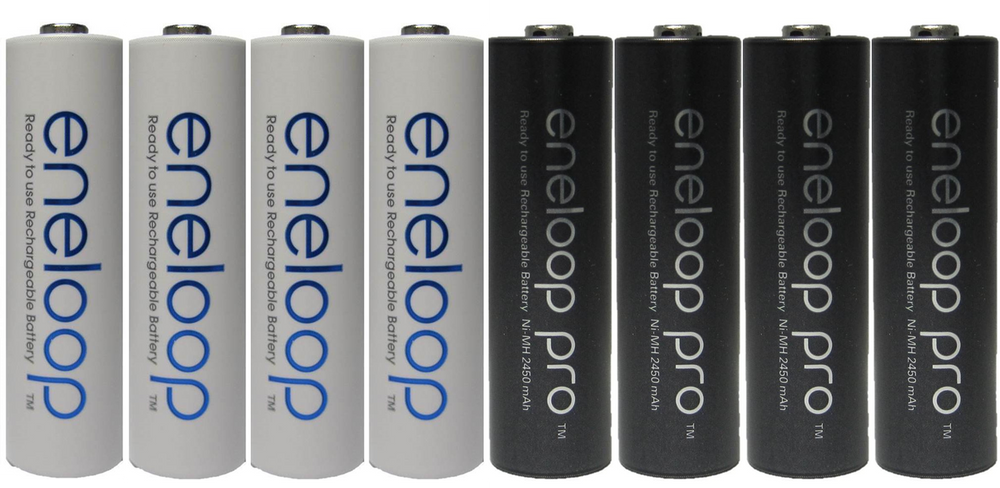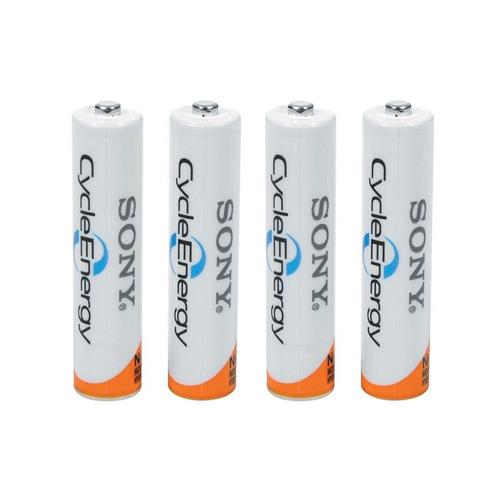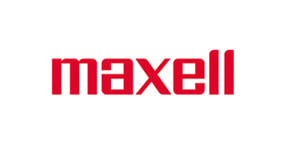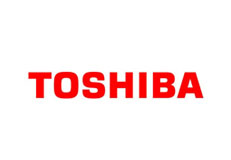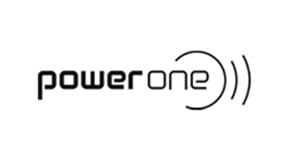Rechargeable Batteries Guide
RECHARGEABLE BATTERIES
Looking To Buy Rechargeable Batteries? Click Here To View Rechargeable Batteries From Microbattery.com
A rechargeable battery is measured by its charging capacity, which is shown in mAh (milli amp hours). You’ll see this number printed on the packaging, as well as on the battery itself. Capacity is the amount of electrical charge stored inside the battery. The more charge there is in a battery, the more electrical current it can deliver and the longer it can power your device. For AA rechargeable batteries, you’ll find capacities between 1,300mAh and 2,900mAh AAA rechargeable batteries range from 500mAh to 1,100mAh. Rechargeable batteries can be recharged and reused from 500 to 1000 times depending on usage. The different battery technologies affect the performance of the batteries.
There are 3 main types of rechargeable batteries:
- NiCd (Nickel-Cadmium)
- NiMH (Nickel-Metal Hydride)
- Li-ion (Lithium Ion)
- NiCd is now the older technology, these batteries are fairly cheap because they suffer "memory" problems.
- The golden rule with NiCds is to completely discharge them every time before charging them again, that way they will always be at their best performamce.
- NiCd can be "cycled" around 1000 times, or charged once a day for around 3 years before they die.
- NiCd batteries has a lower voltage than its standard counterparts
- NiMH batteries are more expensive, but throughout their life they can be partially discharged and charged as many times as you like (up to around 1000 times) and they will always have full capacity.
- Much larger capacity than NiCd's, which they've replaced
- Very common, so it's easy to find both batteries and chargers
Li-ion (Lithium Ion)
- Li-Ion batteries solve both the problem associated with with the other two types of batteries (full voltage and suffer no memory problems)
- Not available in standard voltage, except for 9V size (AAA, AA, C, and D-size Li-ion put out 3.7V instead of 1.5V)
- Requires a special charger
Q & A
A. Can I use rechargeable batteries in devices that use single-use or alkaline batteries?
Yes. In most situations, nickel metal hydride (NiMH) batteries can replace (single-use) primary batteries, especially for high drain electronic devices. The main benefits are that after the initial investment they will save you money as you can reuse those batteries hundreds of times and they have the added benefit of helping the environment by saving raw materials and avoiding the waste of single-use batteries which may eventually end up in land-fill.
There may be some devices where rechargeable batteries may not be suitable, for example some brands of DAB radios where four or six batteries are used in series, and the voltage difference between NiMh rechargeable batteries and standard alkaline batteries can cause poor performance.
B. Can I use my rechargeable batteries straight from the pack?
If your rechargeable batteries state they are "Pre-Charged" or "Ready to Use" they can be used straight from the pack just like single-use batteries. However, standard rechargeable batteries do not have this feature so they will need an initial first charge before use.
C. What is ‘self-discharge’ of a rechargeable battery?
Self-discharge is an occurrence in rechargeable batteries in which internal chemical reactions reduce the stored charge of the battery without any connection between the electrodes i.e. when not in use in a device. Self-discharge decreases the shelf-life of batteries and causes them to initially have less than a full charge when actually put to use.
The rate at which self-discharge in a battery occurs is dependent on a range of factors such as the type of battery, state of charge, charging current and ambient temperature. Typically, among standard rechargeable batteries, lithium batteries suffer the least amount of self-discharge (around 2–3% discharge per month), while nickel-based batteries are more seriously affected (nickel cadmium, 15–20% per month; nickel metal hydride, 30% per month), with the exception of Low self-discharge (stay-charged) NiMH batteries (2-3% per month).
Storing batteries at lower temperatures thus reduces the rate of self-discharge and preserves the initial energy stored in the battery.
D. What does 'Stay-Charged' mean?
Stay-charged reachargeable batteries hold their charge much more effectively when not in use. Standard NiMH rechargeable batteries (those that do not have the Stay-Charged technology) will gradually lose their power over a period of weeks and months even when not in use (around 30% per month) in a process known as ‘self-discharge’. This occurs when the internal chemical reactions reduce the stored charge of the battery even when the battery is not in use. By comparison, stay-charged batteries have a low self-discharge rate of around 2-3% per month, therefore retaining their charge and remaining ready to use.
In practical terms, using stay-charged batteries for everyday devices (that don’t drain the batteries completely in a short period of time) means they will retain their power when not in use and so will be ready to use and not need recharging as often. For high drain devices such as remote control toys or digital cameras using a flash, a higher capacity standard NiMH rechargeable may be more suitable, as they will have more power over the first few days before the benefits of a stay-charged battery are applied. However for devices such as smoke alarms, torches, or devices that are used a little less frequently but need a charge on demand, then stay-charged batteries may be a better option
E. What is ‘Memory Effect’? Does it apply to rechargeable batteries?
Memory effect occurs when a rechargeable battery is charged before its’ capacity is completely drained. The battery may then ‘memorise’ the last discharge level and only accept that amount of charge in subsequent charges, therefore decreasing the capacity it will recharge to and reducing its service time. However with advances in rechargeable technology this problem has been virtually eradicated in modern NiMH rechargeable batteries.
F. How do I charge my rechargeable batteries?
Rechargeable batteries will generally need a separate, suitable battery charger to recharge them.
There are a wide variety of battery chargers available for different battery sizes, from fast, intelligent chargers, to overnight chargers – all with different features and benefits.
There are some exceptions such as in DECT cordless phone, baby monitors or solar lights where the batteries are recharged via the contacts in the device when it is placed in the base charging unit or dock. Please check the instructions to ensure you choose the correct type of rechargeable battery for your device.
G. Which capacity battery is best for me?
Different devices will require different capacity batteries. For example cordless phones are frequently charged, so don’t usually get a chance to run completely flat, therefore a low to mid capacity battery would be suitable. Other devices which can use a low capacity battery include garden solar lights or remote controls.
Typical low–mid range capacity batteries are: AA size batteries (800 – 1300 mAh) and AAA size batteries (400 – 800 mAh)
Typical high capacity batteries are: AA size batteries (1950 - 2700 mAh) and AAA size batteries (950 - 1100 mAh)
Devices which require high capacity batteries include remote control cars, digital cameras and some electronic toys. If you find you are replacing batteries frequently, a high capacity battery will provide longer lasting power.
If your device requires batteries which hold their charge in between uses and perhaps are not used for a period of time you may wish to choose a rechargeable battery with stay-charge technology which means the batteries retain their charge between uses.
H. Temperature VS. Battery Life
Batteries typically use an electrochemical reaction to give off usable energy. The efficiency of this reaction can be heavily influenced by a few external factors, including temperature. Most battery manufacturers will recommend the ideal operating temperature of their products to be at or around room temperature, around 68°-80°F. Operating or charging your battery at different temperatures outside this range will result in very difference performance from the same battery. Interestingly, there you can see a big difference in operation between a battery operated at low temperatures vs. the same battery operated at high temperatures
Operating A Battery At Extremely High Temperatures: High temperatures allow for there to be less electrical resistance to the battery. This will allow for a great deal more power to your device. Although it sounds great that your battery will give you more power, you will shorten the overall service life of the battery. For example, a battery that is operating at 68°F can see a 40% loss in overall service life when operating at 115°F. This is important to remember when considering rechargeable batteries, as you will get fewer overall charge cycles before you need to get a new battery all together.
Operating A Battery At Extremely Low Temperatures: Operating a battery at very low temperatures basically yields the opposite result for your battery. Extreme cold can cause there to be a lot more resistance to the battery. This reduces the efficiency of the battery, resulting in less power and run time per charge. Although this is a downside, operating a battery in very cold temperatures can extend the overall service life of the battery a great deal. This means you can get more charge cycles out of the same battery, and not have to replace it. Usually cellphones use very expensive lithium batteries, so being able to get an extended service life out of your product is a nice consolation to shorter overall run time.
Overall, it is best practice to try and use your batteries at the recommended optimal temperature in order to get the most balance between performance and service life. If you are using your device in extreme cold you may find keeping it in a pocket close to the body being an easy way to make sure your device is closer to room temperature when it is going to be used. If you find yourself needing to use your device in an extremely hot environment, you can try to hold it near air conditioning in order to bring the temperature down, closer to the recommended room temperature.


